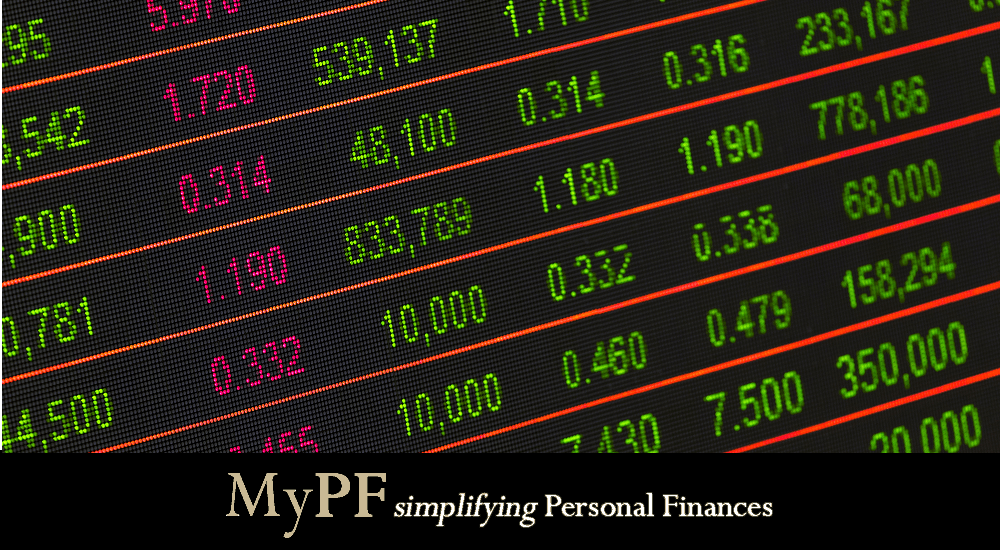Is trading viable as a side income for you? What are the ways you can make it be so?
Have you ever wondered whether you can make trading viable as a side income for you? You would have surely heard about the many risks that comes from trading and how it is gambling away your money.
However, that is only half the truth as you don’t necessarily have to treat it like gambling. If anything, trading might be more intense than you think it is.
Find out the ways below on how you can make your trading feasible as a side income.
Contents
#1: Putting in 10% of Your Savings
Contrary to popular belief, trading’s main objective is not to make as much profit as possible but to effectively manage your risk while doing it. Hence, to prevent yourself from risking your whole savings and capital, you should put a maximum of only 10% of your savings into trading. That way, you cap the maximum loss of your trading at that level only.
Furthermore, you should only trade with the money you have at the moment in your account. This means if you initially put in RM3,000 and made a loss of RM500, you should only trade the remaining RM2,500 in your next trade. You prevent yourself from constantly topping up money into your account.
This means that to increase the amount of money you use for trading, either make more profit from trading or save up more money from your main income. Remember, the objective of trading is to manage your risk of doing it while making profit.
#2: Make Short Trades
Don’t make trading your main job or income. You should always make it a point to make short and quick trades as you don’t want to be spending the whole day trading while you have your main job. If anything, it is advisable to hold down a main job to protect yourself against trading losses.
You should limit your trades to about 30 minutes, but you can spend more time depending on your preferences. The principle here is to not let it affect your main job. If you are trading within the Malaysian market, you can choose to trade early in the morning before you start work from 9.00am to 9.30am. The next time slot would be during lunch time from 12.00pm to 12.30pm, just before the market closes for lunch break.
It is entirely possible to make short trades and some money as movements in prices vary by quite a big amount. Prices could move by 2% to 5% within that time frame, which means you could make about RM60 to RM150 in profit with a capital of RM3,000.
However, this ultimately depends on whether you are trading the right investments for that given day, which is covered in the next point.
#3: Selecting the Right Trading Investments
This is probably the most important step in trading – selecting the right trading investment for the given day. If you don’t select the right ones to trade in, it doesn’t matter how good you are at trading or at wielding trading strategies, tips, and tricks. Ideally, you are looking for investments that are or will be hotly traded by everyone in order for substantial movements in the price.
Contrary to popular opinion that trading doesn’t require much reading, it actually requires you to read up extensively on all kinds of news to identify asset classes that could be seeing a lot of attention. More specifically, you are looking for investments that have heavy news flow through these:
- Quarterly Financial Publication
- Award of Contracts
- Government Policy Announcements
- Economic Indicators Publication
Investments movement will be significantly affected by these news as investors are weighing whether price will go up or down. In the short run, there will a tussle between people who are positive and negative, where prices are much more volatile. Your job as a trader will be to identify which direction prices will go according to how this tussle is in the market.
#4: Always Respect Your Stop Loss
Recall our first point mentioned earlier in this article that trading’s main objective is to manage your risks while making some profits. Respecting your stop loss is an iron-clad rule for yourself when trading.
A stop loss here means that this is the maximum loss you can incur for yourself and no matter what, you will exit the trade when you hit your stop loss. This is essential to prevent yourself from getting wiped out.
Many people make this mistake of telling themselves that price will recover back when it has reach the stop loss. In reality, price could keep declining further, exacerbating your loss and completely wiping out your capital.
Set a stop loss and respect it. Ideally, you want to set your stop loss that is 1% to 2% below the price that you entered the investment at. That way, you can mitigate the risk that you are taking for your trades by capping your loss at a certain level. Remember, live to trade another day.
#5: Implement the Right Strategy
There is always a right strategy to trade on and it is up to you identify the right one. It depends on how the price of investments have been behaving and what is the overall sentiments of investors in the market.
For instance, if you noticed that the trend of prices has consistently been increasing at certain intervals of time, there might be an opportunity to implement an ABCD strategy. You would need to identify the following conditions to trade this strategy :
- Price increased to a certain level before this. The peak of this trend will be point A.
- Price does not go up further but stabilise around a certain level. This will be point B.
- Once it is stable, buy the investment at or slightly below point B. This will be point C.
- Price increase again. The peak of this trend will be point D.
There are a myriad of other strategies too depending on how prices behave such as turnaround, oscillation, and many others more. A trader identifies the right strategy to implement depending on the news flow and the past price behaviours. If anything, this requires a lot of effort to monitor prices and news flow.
#6: Using Simple Indicators
Trading in the market requires you to understand how to use technical indicators, but it doesn’t necessarily have to be complex. If anything, it is better to be simple in your approach as complicating your trading makes trading harder to implement if you don’t understand fully how to use them.
You can look at the following indicators that are simple to use and easily understood:
- Moving Average
- Relative Strength Index
- Standard Deviation
Start with these simple indicators first before going on to more complicated technical indicators like Stochastic Oscillator, Moving Average Convergence Divergence (MACD), or Bollinger Bands. Trading in this regard can be considered more technical compared to investing.
#7: Be Disciplined and Stick to Your Plan
This is the most important principle here. Yes, you trade to make money, but most importantly you are training yourself to be disciplined in following your own trading plans.
Trading requires patience and discipline most importantly. Patience in waiting for the right conditions to appear first before implementing your trade. Even if one of the conditions is not present, you should not initiate the trade. Discipline in executing your trade according to what you plan such as your stop loss and target profit. If the trade doesn’t go as you plan, you should exit straight away.
Similar to investing, trading requires you to have an elaborate plan and strong discipline to adhere to it. This is the opposite to what people always think about trading – gambling.
Conclusion
There are ways to make trading feasible as your side income and you should not necessarily associate it with gambling. Put in 10% of your savings only into trading and set your stop loss to about 1% to 2%, to manage your risk. You could then select the right investments to trade on, make short trades, implement the right strategy, and use simple indicators to initiate your trades. Finally, you need to be disciplined and stick to your plans.
Are you thinking about making trading your side income? Let us know in the comments below!











Leave A Comment